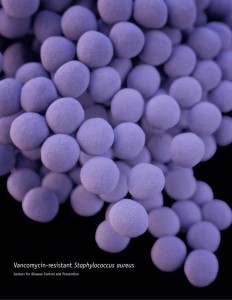 CDC’s Vital signs publication recently highlighted unusual antibiotic resistance germs, which are resistant to all or most antibiotics tested and are uncommon or carry special resistance genes. Antibiotic-resistant germs can spread very easily. Germs constantly develop resistance against new and older antibiotics. Examples of unusual resistance include: Vancomycin-resistant Staphylococcus aureus (VRSA), Candida auris and certain types of “nightmare bacteria” such as carbapenem-resistant Enterobacteriaceae (CRE). New nationwide testing in 2017 uncovered 221 instances of unusual resistance genes in “nightmare bacteria.”
CDC’s Vital signs publication recently highlighted unusual antibiotic resistance germs, which are resistant to all or most antibiotics tested and are uncommon or carry special resistance genes. Antibiotic-resistant germs can spread very easily. Germs constantly develop resistance against new and older antibiotics. Examples of unusual resistance include: Vancomycin-resistant Staphylococcus aureus (VRSA), Candida auris and certain types of “nightmare bacteria” such as carbapenem-resistant Enterobacteriaceae (CRE). New nationwide testing in 2017 uncovered 221 instances of unusual resistance genes in “nightmare bacteria.”
Our Healthcare-Associated Infections Program and the Arizona State Public Health Laboratory are working closely with federal and local health partners to control these unusual resistance germs. This includes increased surveillance, communication and education concerning the need to prevent the resistance germs among the public and healthcare providers throughout Arizona, providing timely lab results and recommendations to affected healthcare facilities, and working with local health agencies and healthcare facilities on containment strategies.
Healthy people usually do not develop infections from these “nightmare bacteria.” The bacteria primarily affect patients in acute and long-term healthcare settings, who are being treated for another condition. The main risk factors for infections from “nightmare bacteria” in the US include exposure to healthcare and exposure to antimicrobials, use of devices (e.g., central venous catheters, endotracheal tubes, and urinary catheters), and travel history or receiving healthcare outside the US.
To control unusual resistance germs, you can:
- Inform your health care provider if you recently received health care in another country or facility.
- Talk to your health care provider about preventing infections, taking good care of chronic conditions and getting recommended vaccines.
- Practice good hygiene, such as keeping hands clean with handwashing or alcohol-based hand rubs, and keep cuts clean until healed.
For more information about containment of unusual resistance, visit the CDC website.









